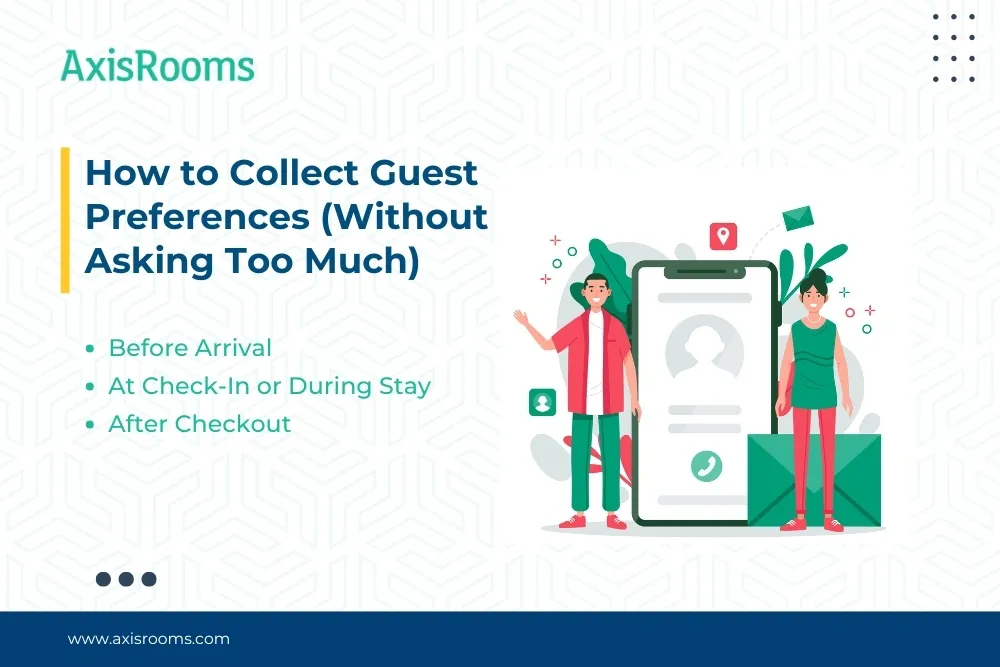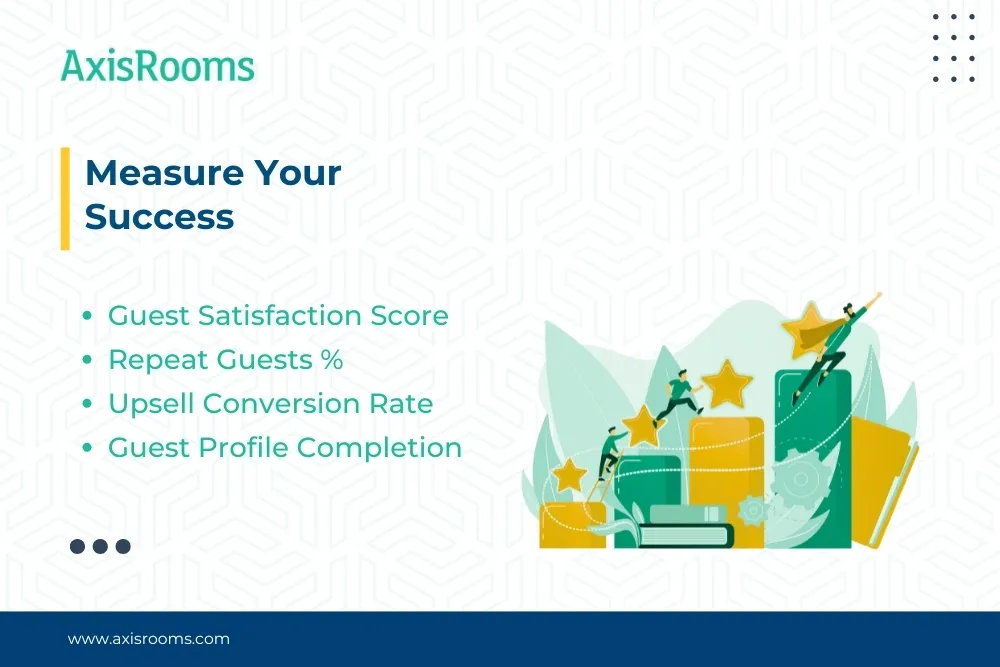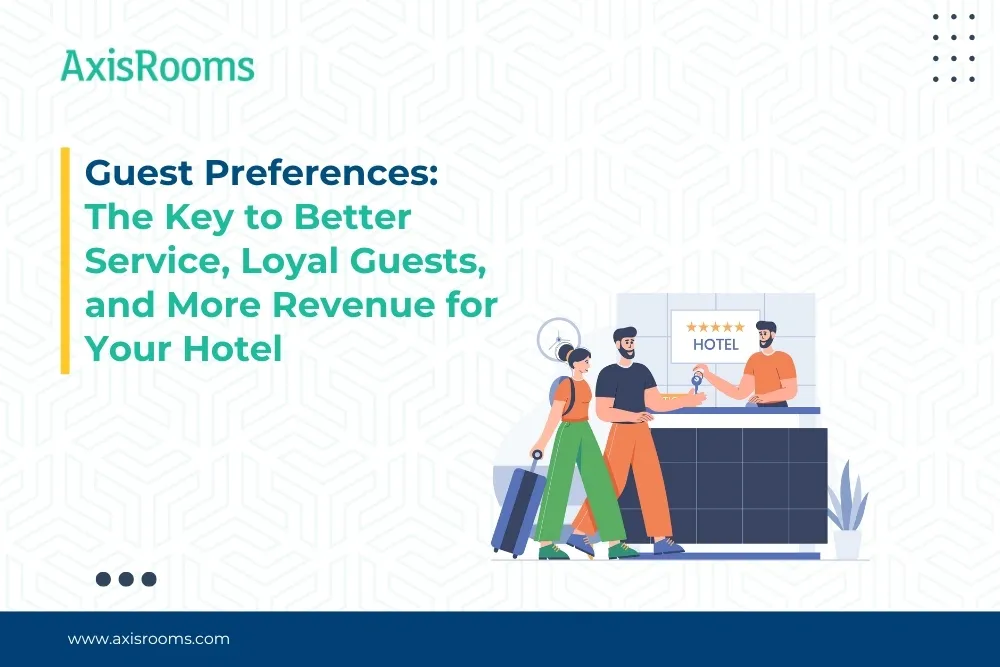In today’s competitive hotel business, understanding guest preferences is more important than ever. Knowing what your guests like—before and during their stay—helps you provide better service, improve guest satisfaction, and earn more revenue.
Let’s explore how hoteliers can use guest data, hotel management software, and personalized service to turn first-time visitors into repeat guests.
1. What Are Guest Preferences and Why Do They Matter?
Guest preferences are the personal likes, needs, or habits of your guests. These can include:
- Preferred room type or floor
- Bed and pillow type
- Food and drink choices
- How they like to be contacted (email, SMS, WhatsApp)
- Special requests (late checkout, quiet room)
Understanding and remembering these details helps you make the guest feel more welcome, which leads to better reviews and higher chances of them returning.
2. How to Collect Guest Preferences (Without Asking Too Much)

You don’t have to ask a hundred questions to learn what your guest likes. Use smart methods to collect preferences before, during, and after their stay.
Before Arrival
Send a simple pre-arrival email or message. Ask for basics:
“Would you like a soft pillow or firm pillow?” “Any food allergies we should know about?”
At Check-In or During Stay
Train staff to notice guest habits and record them in the system:
If a guest asks for extra towels or drinks black coffee every morning, note it.
After Checkout
Send a short feedback form and include a few questions about their stay. This helps you improve and personalize future stays.
3. Use Your Hotel Software to Make It All Work
Trying to remember everything manually? That’s not easy. Good hotel management software with strong PMS integrations can store and organize all guest data for you.
Helpful Features to Look For in Hotel Software:
- Guest profiles with booking history and preferences
- Tags like “vegetarian,” “business traveler,” or “honeymoon couple”
- Alerts for staff (e.g., “prefers quiet room”)
- CRM (Customer Relationship Management) for communication
This makes it easy for every department—front desk, housekeeping, kitchen—to deliver a personalized guest experience without stress.
How AxisRooms Helps
4. Personalizing Guest Services in Real Life
Let’s see how guest preferences can be used to improve service in your hotel:
Small touches like these create big impressions—and guests remember them.
5. Better Service = Happier Guests + Higher Revenue

Guest preferences are not just for good reviews—they also help grow your business.
Here’s How:
- Higher Satisfaction: Guests feel cared for, not just served
- Repeat Bookings: Personalized service brings them back
- Upsell Opportunities: Offer what they really want, at the right time
Real Example: One hotel started offering spa packages only to guests who booked massages before. Spa sales increased by 20% in just three months.
6. Using Preferences in Loyalty Programs
Many loyalty programs give the same benefits to all guests. But imagine if your hotel gave rewards based on what guests like most?
This way, rewards feel special—and guests keep coming back.
7. Upselling the Right Way with Preferences
Upselling is not about pushing services. It’s about offering something helpful—at the right time.
When guests feel the offer fits their needs, they’re more likely to say yes.
8. Train Your Team to Use Guest Preferences
Everyone in your hotel plays a part. From front office to housekeeping—everyone can notice, collect, and act on guest preferences.
When the whole team works together, the guest feels the difference—and it supports your overall hotel marketing strategy by turning happy guests into loyal promoters.
9. Measure Your Success

You can track how well your preference strategy is working by checking:
Keep improving based on these numbers.
10. What to Avoid
Here are a few mistakes to watch out for:
- Don’t guess preferences—ask or observe first
- Update guest profiles regularly—people change
- Don’t store guest data in multiple systems—use one central place
- Train all departments—not just front desk
When done right, using guest preferences becomes a strong part of your hotel’s success.
11. Case Study: Small Hotel, Big Impact
Hotel:
80-room boutique hotel in Lisbon
Problem:
Low repeat bookings, poor upsell results
Solution:
- Used hotel software to build guest profiles
- Trained staff to note preferences
- Sent personalized offers before arrival
Result:
- 27% more repeat bookings
- Tripled upsell revenue
- 90% of guest profiles now complete
Even small hotels can make a big impact with the right tools and mindset.
12. Final Thoughts: Start Small, Think Long-Term
Personalizing your service using guest preferences isn’t a one-time job—it’s a continuous effort. But it pays off. Guests are happier, your team works smarter, and your hotel earns more.
Whether you manage a boutique property or a large chain, knowing your guests better is the best way to grow your business. Start by collecting a few key preferences. Build systems around them. Train your team. The results will follow.
✅ Quick Checklist for Hoteliers
- Do we ask guests about their preferences before they arrive?
- Are we using hotel software to store this information?
- Do all departments use guest preferences in their service?
- Are we offering upsells based on what the guest actually wants?
- Can we measure the results of our personalization efforts?


